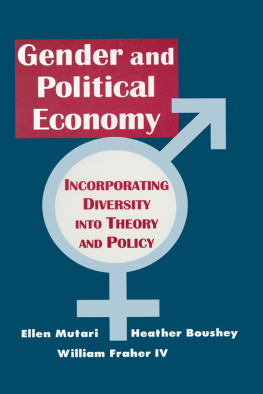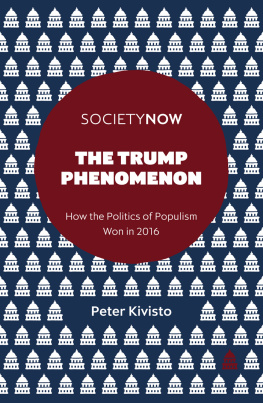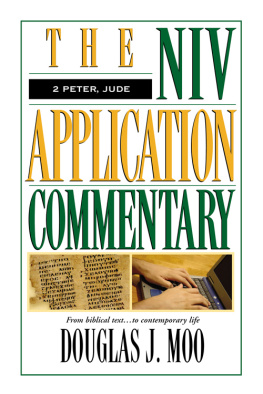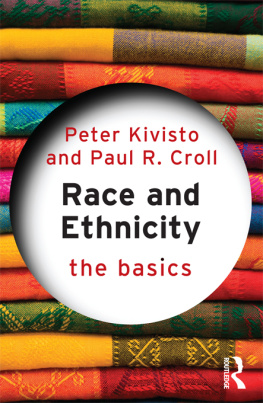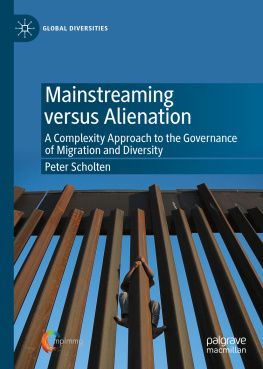First published 2005 by Paradigm Publishers
Published 2016 by Routledge
2 Park Square, Milton Park, Abingdon, Oxon OX14 4RN
711 Third Avenue, New York, NY 10017, USA
Routledge is an imprint of the Taylor & Francis Group, an informa business
Copyright 2005, Taylor & Francis.
All rights reserved. No part of this book may be reprinted or reproduced or utilised in any form or by any electronic, mechanical, or other means, now known or hereafter invented, including photocopying and recording, or in any information storage or retrieval system, without permission in writing from the publishers.
Notice:
Product or corporate names may be trademarks or registered trademarks, and are used only for identification and explanation without intent to infringe.
Library of Congress Cataloging-in-Publication Data has been applied for.
Designed and Typeset by Straight Creek Bookmakers.
ISBN 13: 978-1-59451-080-9 (hbk)
ISBN 13: 978-1-59451-081-6 (pbk)
: Reprinted from Robert E. Park, Racial Assimilation in Secondary Groups with Particular Reference to the Negro, American Journal of Sociology 19, no. 5 (March 1914), pp. 606623.
: Reprinted from W. Lloyd Warner and Leo Srole, The American Ethnic Group, Social Systems of American Ethnic Groups (New Haven, CT:Yale University Press, 1945), pp. 283296, 1945 by Yale University Press. All rights reserved. Used with permission of the publisher.
: Reprinted from Tamotsu Shibutani and Kian M. Kwan, Assimilation into the Larger Society, Ethnic Stratificaton: A Comparative Perspective (New York: Macmillan, 1965), pp. 504533.
: Reprinted from Vladimir C. Nahirny and Joshua A. Fishman, American Immigrant Groups: Ethnic Identification and the Problem of Generations, Sociological Review 45, no. 1 (Oxford:Blackwell), pp. 311326. Used with permission of the publisher.
: Reprinted from The Nature of Assimilation, from Assimilation in American Life by Milton M.Gordon, copyright 1964 by Oxford University Press, Inc. Used by permission of Oxford University Press, Inc.
:Reprinted from Nathan Glazer, Is Assimilation Dead? Annals 530 (November 1993), pp. 122136. Copyright The American Academy of Political and Social Science. Reprinted with permission.
: Reprinted from Ewa Morawska, In Defense of Assimilation, Journal of American Ethnic History 13, no. 2 (Piscataway, NJ: Transaction Publishers, 1994). Used with permission of the publisher.
: Reprinted from Herbert Gans, Toward a Reconciliation of Assimilation and Pluralism: The Interplay of Acculturation and Ethnic Retention, International Migration Review 41, no. 4 (winter 1997), pp. 875892.
: Previously unpublished manuscript, Rubn Rumbaut, The Melting and the Pot: Assimilation and Variety in American Life. Used with permission.
). Used with permission.
: Reprinted from Elliott R. Barkan, Race, Religion and Nationality in American Society, Journal of American Ethnic History 14, no. 2 (Piscataway, NJ: Transaction Publishers, 1994). Used with permission of the publisher.
: Reprinted from Alejandro Portes and Min Zhou, The New Second Generation: Segmented Assimilation and Its Variants, Annals 530 (November 1993), pp. 7496. Used with permission.
: Reprinted from Richard Alba and Victor Nee, Rethinking Assimilation Theory for a New Era of Immigration, InternationalMigration Review, 31, no. 4 (winter 1997), pp. 826827, 849865.
: Reprinted from Stephen Castles, Migration and Community Formation under Conditions of Globalization, International Migration Review 36, no. 4 (2002), pp. 11431168. Used with permission.
: Reprinted from Peter Kivisto, Social Spaces, Transnational Immigrant Communities, and the Politics of Incorporation, Ethnicities 3, no. 1 (2003), pp. 528. Used with permission of the author.
: Reprinted from Jeffrey C. Alexander, Theorizing the Modes of Incorporation: Assimilation, Hyphenation, and Multiculturalism as Varieties of Civil Participation, Sociological Theory 19, no. 3 (November 2001). Used with permission.
Assimilation is back. Once a central concept in sociology, it fell out of fashion in the 1960s. More recently, we have witnessed a return to assimilation, though not necessarily to the canonical formulation. New and promising developments are under way that relate assimilation to newer concepts in the sociological arsenal such as multiculturalism, transnationalism, and globalization. This book is designed to provide migration and ethnic relations scholars with a ready guide to key texts that have developed our understanding of assimilation from its earliest formulation a century ago up to the present. Classic texts from Robert E. Park to Milton Gordon afford readers the opportunity to become acquainted or reacquainted with those most responsible for developing the earliest formulation of assimilation theory. This section of the reader is followed by one devoted to a selection of readings by key scholars responsible for the resuscitation of assimilation theory, including essays by principal figures such as Nathan Glazer and Herbert Gans. Finally, the collection turns to new directions in assimilation theory, which looks at developments such as the idea of segmented assimilation, the forms of capital approach to assimilation, the relationship between assimilation and multiculturalism, the relationship between assimilation and transnationalism, the salience of citizenship, and the impact of globalization. As a whole, the collection is intended to offer an overview of the career of assimilation during the twentieth century and a sense of its promise for the twenty-first.
In thinking through the central issues revolving around incorporating diversity in modern liberal democracies, I benefited greatly from conversationssome fleeting, some sustainedover the past several years with a number of scholars, both from the United States and abroad. Among the people I would like to thank for helping me clarify my understanding of assimilation are the following: Richard Alba, Erik Allardt, Martin Bulmer, Thomas Faist, Melvin Holli, Michael Lanphier, Peggy Levitt, Tariq Modood, Alex Portes, John Solomos, Lydio Tomasi, and sten Wahlbeck. Ewa Morawska and I have been engaged in a dialogue on these matters for about fifteen years. Perhaps because we are historical sociologists who conducted research on immigrants from the last great migratory wave to the United States before turning to contemporary immigration, we have discovered that we share much in common at both the empirical and theoretical levels. I have learned a great deal from Ewa over the years and appreciate her critical support. In addition, I want to extend special thanks to Rubn Rumbaut. He has been much involved in this project, offering numerous suggestions for articles to be included and a running commentary on the themes and issues addressed herein. His knowledge of the history of the discipline is wide ranging and deep, and I have benefited from his willingness to share what he knows. His commentary on a draft of my introduction was especially valuable.





